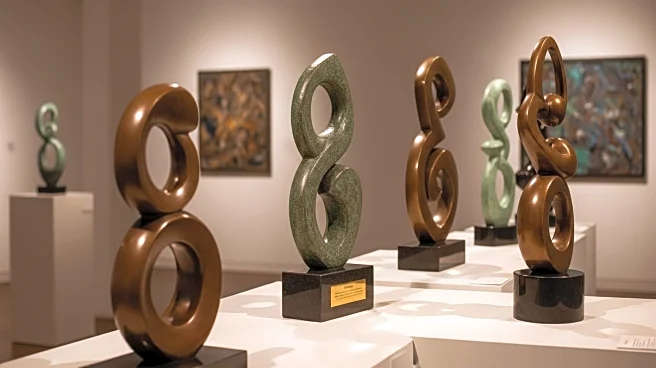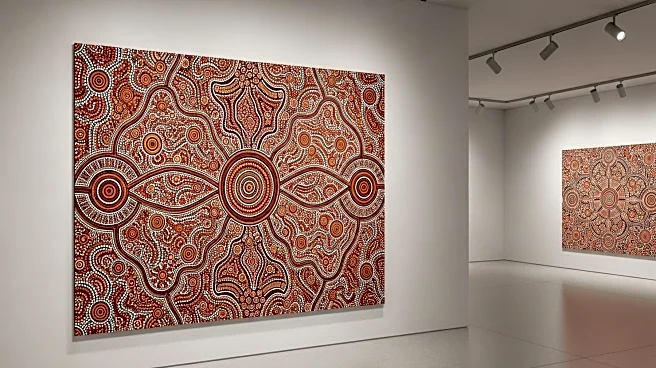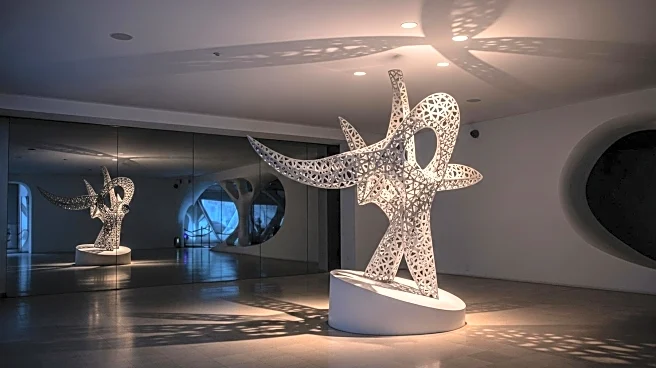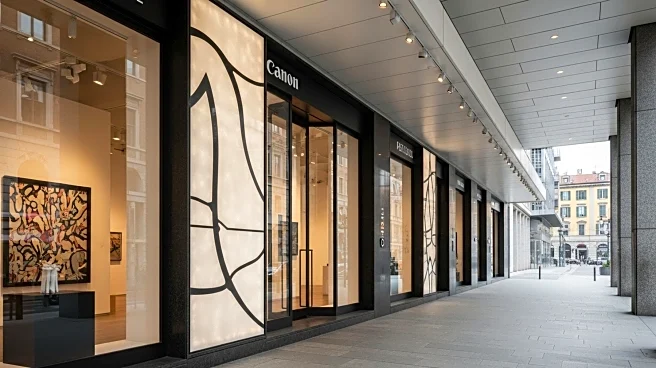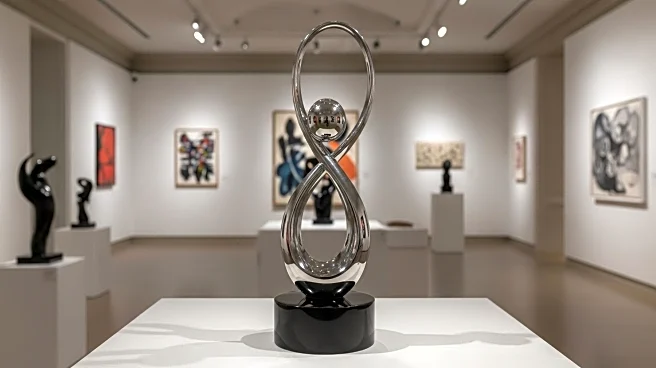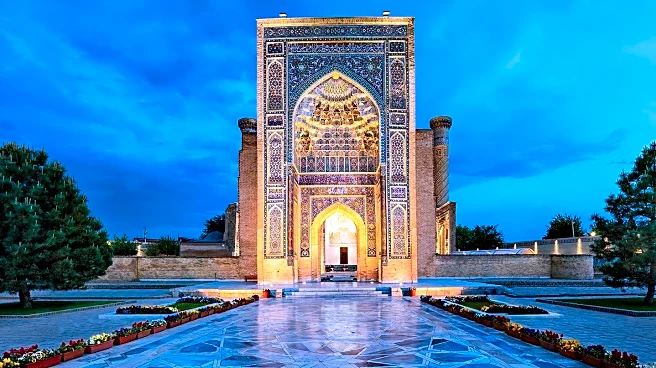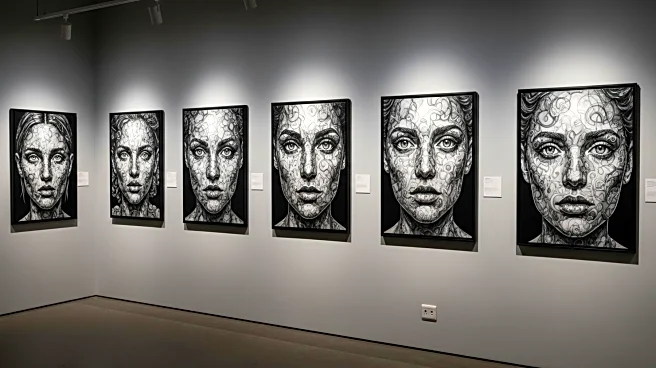What is the story about?
What's Happening?
Simone Leigh, an internationally-renowned American sculptor, has unveiled two of her sculptures at the Turner Contemporary gallery in Margate, East Kent. The exhibition, which will run until March 2026, showcases Leigh's exploration of black female subjectivity, resilience, and community. Her work, which spans over two decades, often merges the female form with architectural elements to highlight overlooked or erased histories. The gallery director, Clarrie Wallace, emphasized the significance of Leigh's sculptures in fostering conversations beyond the gallery walls. Leigh's practice includes sculpture, video, and installation, focusing on women's unacknowledged acts of work, community, and care.
Why It's Important?
Simone Leigh's exhibition is significant as it brings attention to the narratives of black women, often marginalized in mainstream art discourse. By focusing on themes of resilience and community, Leigh's work challenges traditional art narratives and encourages a broader understanding of cultural histories. This exhibition not only highlights the importance of diversity in art but also underscores the role of art in social commentary and historical reflection. The presence of such works in a prominent gallery like Turner Contemporary can influence public perception and appreciation of diverse cultural contributions.
What's Next?
Following the exhibition in Margate, a prestigious showcase of Simone Leigh's work is scheduled to open at the Royal Academy in London in 2027. This upcoming exhibition will likely expand her audience and further solidify her influence in the art world. As her work continues to gain recognition, it may inspire other artists to explore similar themes, potentially leading to a broader movement within contemporary art that emphasizes underrepresented voices and histories.
Beyond the Headlines
Simone Leigh's work not only addresses historical and cultural themes but also engages with the idea of the body as a vessel or metaphor for shelter and refuge. This conceptual approach invites viewers to consider the intersections of identity, space, and history. The exhibition's focus on African aesthetics and architecture further enriches the dialogue around cultural heritage and its representation in modern art. Such exhibitions can contribute to a deeper understanding of the complexities of identity and the role of art in shaping societal narratives.
AI Generated Content
Do you find this article useful?
